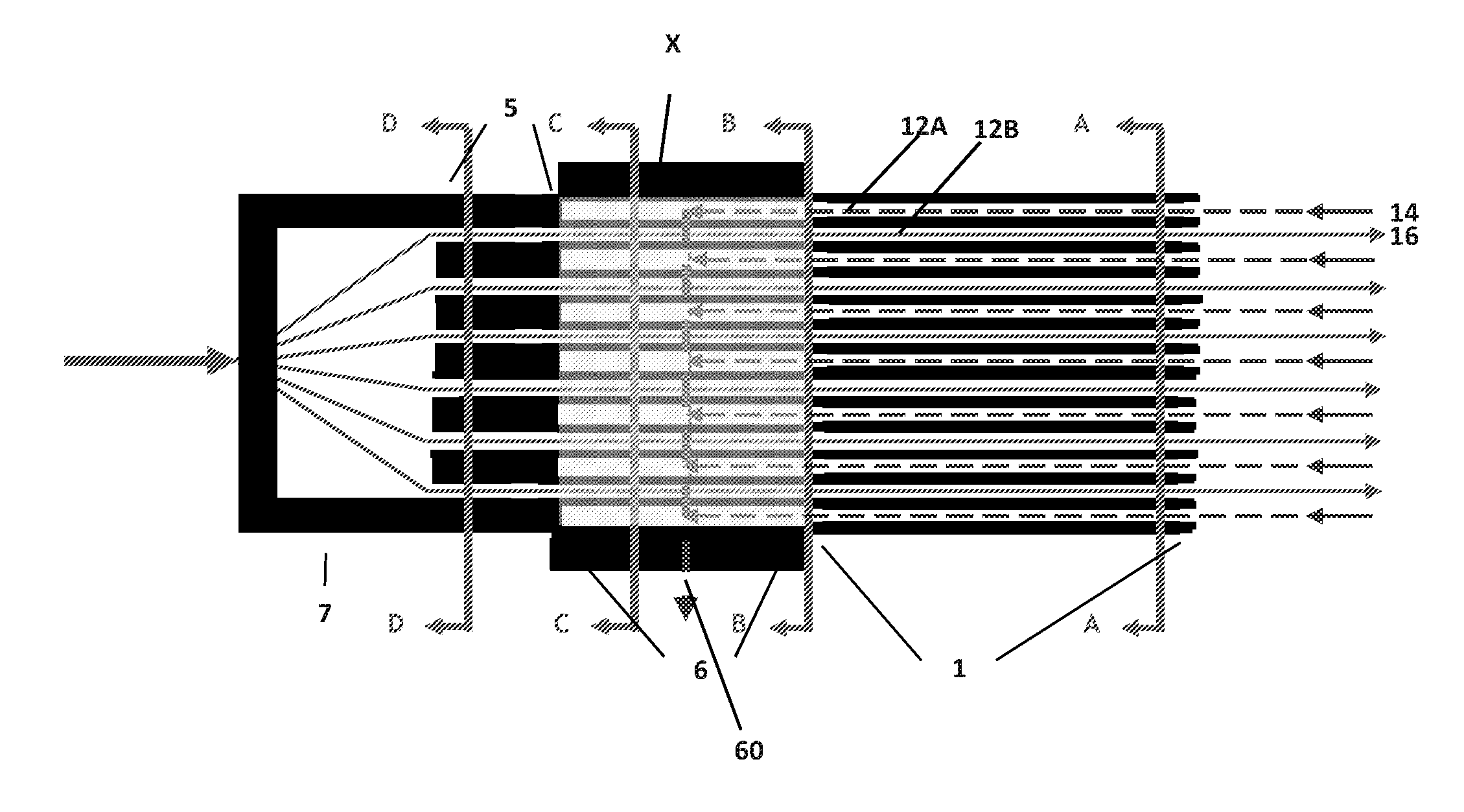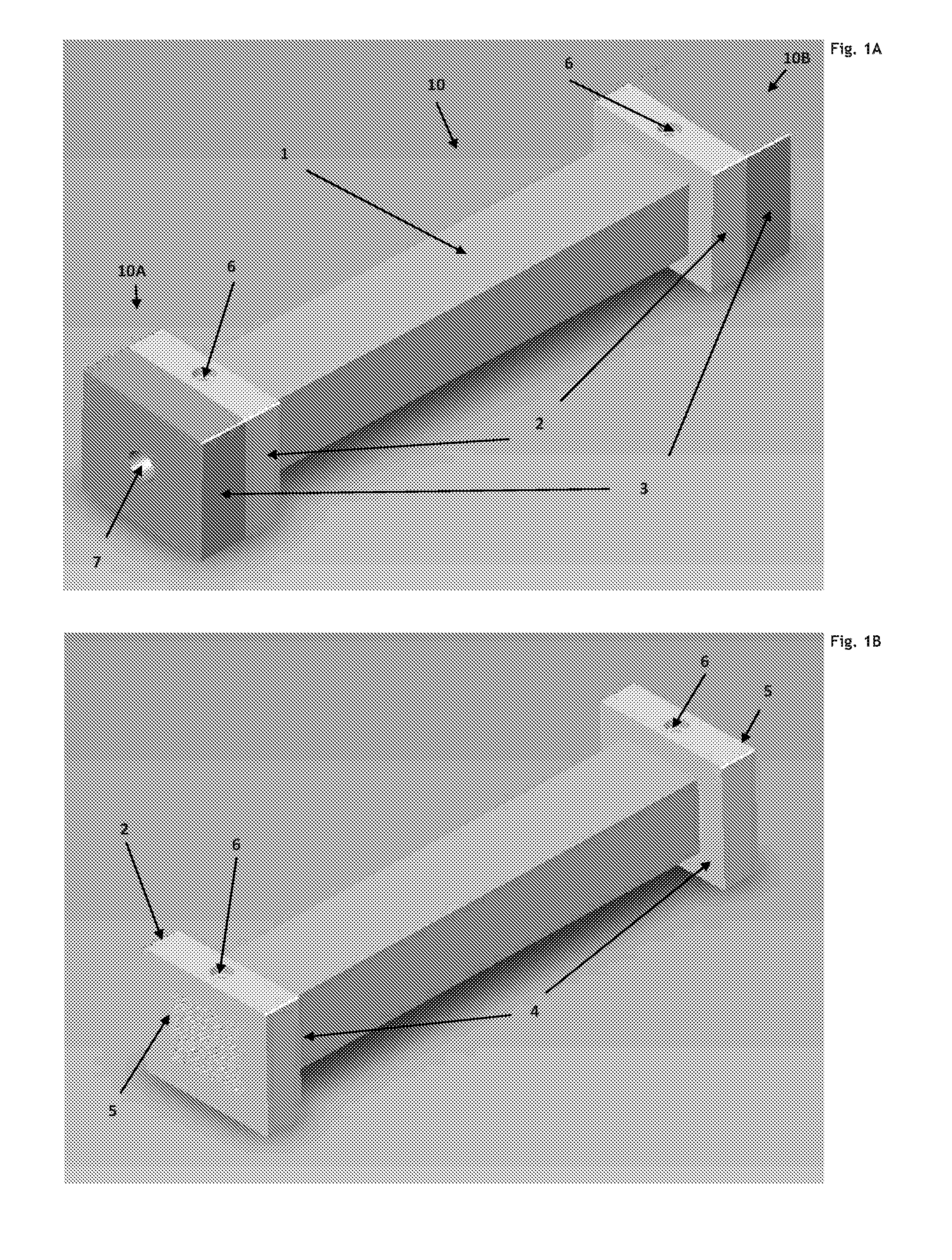Countercurrent heat exchanger/reactor
a heat exchanger and countercurrent technology, applied in indirect heat exchangers, lighting and heating apparatuses, chemical/physical/physicochemical processes, etc., can solve the problems of difficult to maintain separation between opposing streams, the design of headers is one of the most challenging problems, and the heat transfer efficiency is maximized. , the effect of reducing the flow rate of working fluids
- Summary
- Abstract
- Description
- Claims
- Application Information
AI Technical Summary
Benefits of technology
Problems solved by technology
Method used
Image
Examples
example 1
[0059]A heat exchanger as shown in FIG. 1 was fabricated according to the contiguous channel configuration, comprising an array of 25×25 square channels, each 0.6-mm inside height and width, occupying an outside dimension of 1-in by 1-in. The size and shape of the channels (see FIG. 2, 12A) for holding a first stream (14) are substantially the same along the longitudinal axis (z). The size and shape of the channels (12B) are altered as shown in FIGS. 3B-3D. The heat exchanger was additively manufactured. In particular, Inconel 718 was used to form the channels (both 12A and 12B). The total length of the bundle was 6.57 inches. Total internal surface area for one of the two countercurrent streams is 0.1202 m2. Overall areal density (surface area divided by overall volume) is thus 1,116 m2 / m3. In a test with water flowing at rates of 0.38 to 1.08 gallons per minute (see Table 4), the power density ranged from 25.1 to 32.4 MW / m3.
TABLE 4Heat duty: Tests with water25 × 25 channels, 1″× 1...
example 2
[0060]A stainless steel microchannel heat exchanger constructed in accordance with the present disclosure, and having an areal density of 1,351 m2 / m3 in a bundle volume of 65.7 cubic inches, weighing 8.5 lbs., was tested under the conditions described in Table 5. Power density for these cases is in the range of 10 to 11 MW / m3.
TABLE 5Heat duty: Tests with carbon dioxide32 × 20 channels, 1.04″× 2.155″× 29.43″ outer dimensionsHeatPowerFlowrateInletOutletdutydensityCaseStream[GPM][F.][F.][kW]MW / m3A2Hot Side3.45175.697.0−10.810.1Cold Side2.2277.8112.911.1B2Hot Side3.37178.997.3−10.910.0Cold Side2.1979.7115.410.7C2Hot Side6.87167.4101.5−12.111.2Cold Side2.2383.3142.512.1
PUM
 Login to View More
Login to View More Abstract
Description
Claims
Application Information
 Login to View More
Login to View More - R&D
- Intellectual Property
- Life Sciences
- Materials
- Tech Scout
- Unparalleled Data Quality
- Higher Quality Content
- 60% Fewer Hallucinations
Browse by: Latest US Patents, China's latest patents, Technical Efficacy Thesaurus, Application Domain, Technology Topic, Popular Technical Reports.
© 2025 PatSnap. All rights reserved.Legal|Privacy policy|Modern Slavery Act Transparency Statement|Sitemap|About US| Contact US: help@patsnap.com



